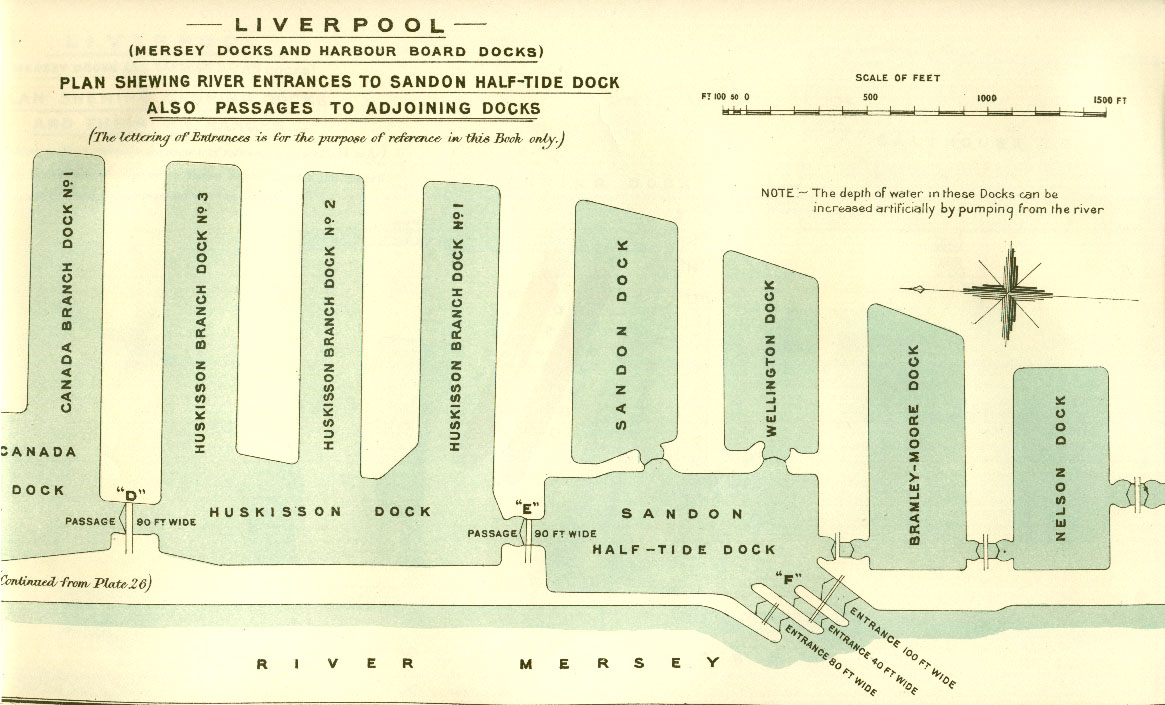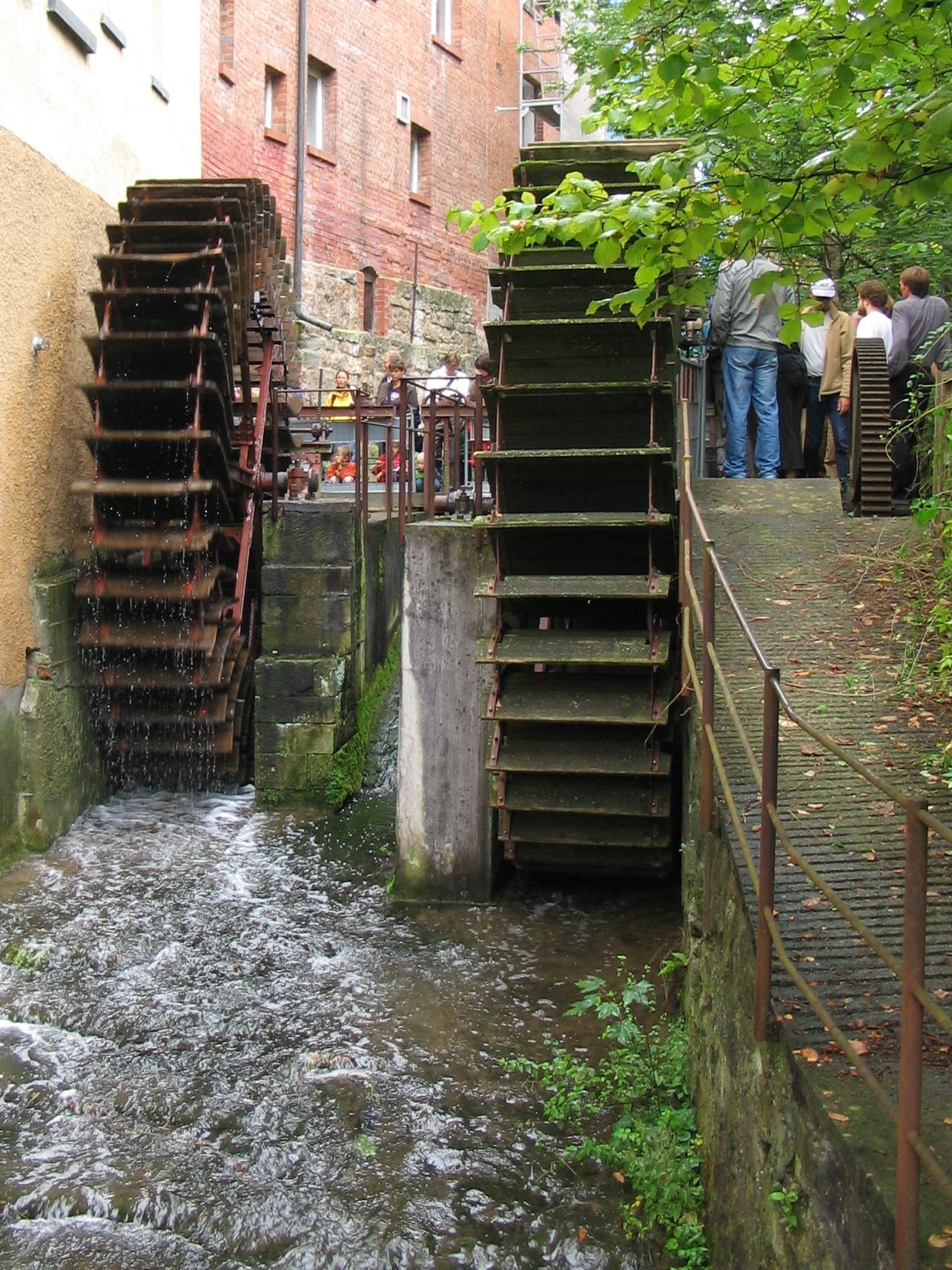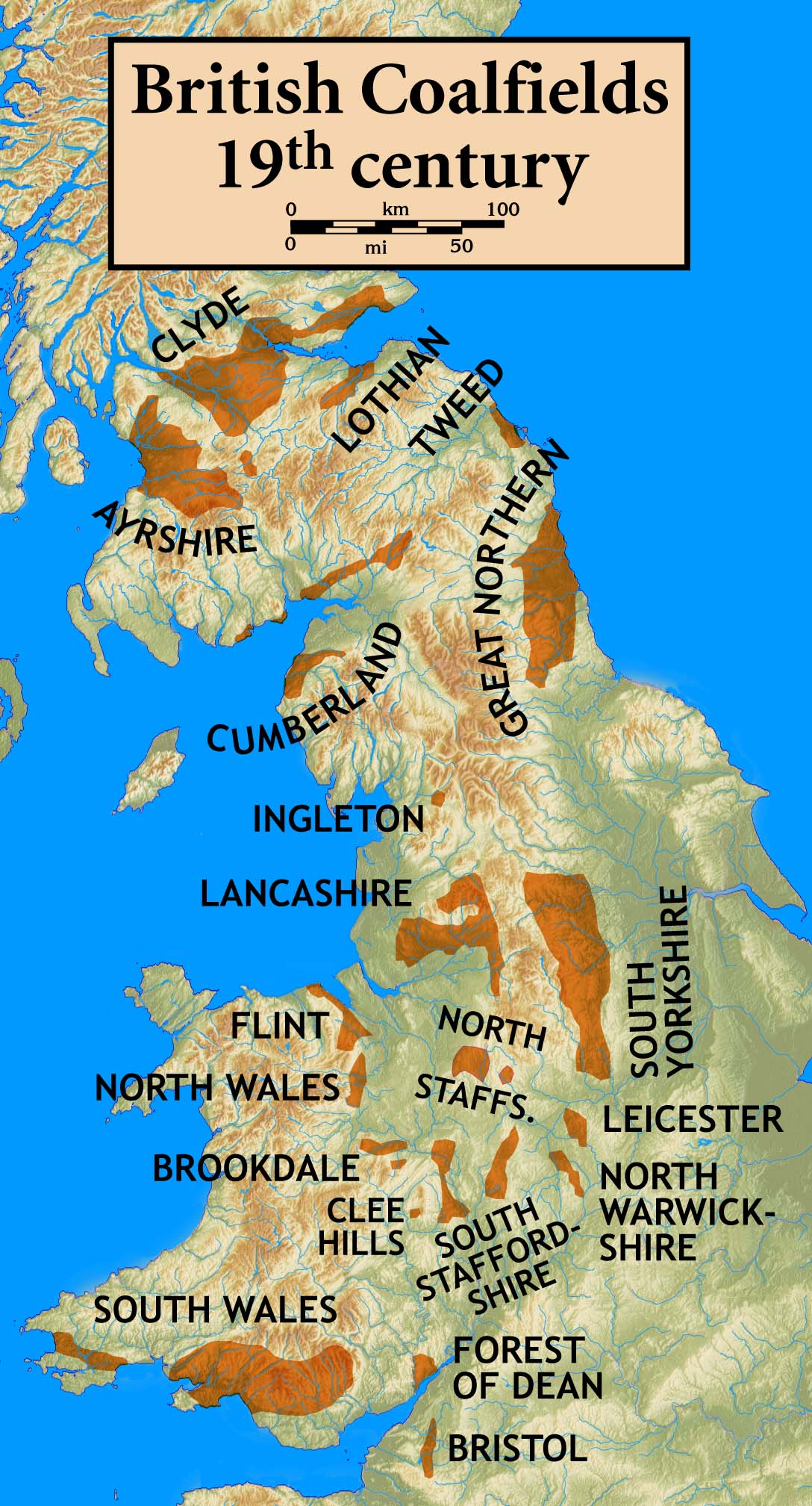|
Bramley-Moore Dock
Bramley-Moore Dock was a dock on the River Mersey in Liverpool, England, and part of the Port of Liverpool. The dock is located in the northern dock system in Liverpool's Vauxhall area, and was connected to Sandon Half Tide Dock to the north and Nelson Dock to the south. Jesse Hartley was the architect. The dock opened in 1848. The dock was infilled with Everton FC's new home ground, Everton Stadium, being constructed on the dock with a 2025 opening date scheduled. The Club received planning approval for a 52,888 capacity stadium which is set to be opened in time for the start of the 2025/26 football season. The project was cited as one of the reasons for the revocation of Liverpool's World Heritage Site status as the Liverpool Maritime Mercantile City, with the World Heritage Committee stating that the project was one of the developments which had resulted in a "serious deterioration" of the historic site. History The dock was opened on 4 August 1848, as part of Jesse H ... [...More Info...] [...Related Items...] OR: [Wikipedia] [Google] [Baidu] |
Vauxhall, Liverpool
Vauxhall is an inner city district of Liverpool, England, north of the city centre, bounded by Kirkdale to the north and Everton to the east, with the docks and River Mersey running along the west side. Vauxhall is in the Liverpool City Council ward of Kirkdale and the edge of the Central, Liverpool ward, although previously it was a ward itself. In the 1841 Liverpool Census the area was covered by two wards ''Scotland'' and Vauxhall. According to the 2001 Census, Vauxhall had a population of 6,699. Description The Vauxhall area is more famously known as the "Scottie Road area" due to the history of Scotland Road running through it. The ''Scottie Press'' is a well known local newspaper for the Vauxhall area and is recognised as "Britain's longest running community newspaper". In 2008 Liverpool celebrated being European Capital of Culture, and in June 2008 to make a point of the area's contribution to Liverpool is not forgotten amid all the cultural celebrations, the Scott ... [...More Info...] [...Related Items...] OR: [Wikipedia] [Google] [Baidu] |
Salisbury Dock
Salisbury Dock is a dock on the River Mersey, England, and part of the Port of Liverpool. It is situated in the northern dock system in Vauxhall and is connected to Nelson Dock to the north, Trafalgar Dock to the south and inland to Collingwood Dock. History Designed by Jesse Hartley, the dock opened in 1848. Its purpose was as a half tide dock, connected directly to the river via two lock entrances. These provided access between the Mersey and the Leeds and Liverpool Canal. By the mid twentieth century, the dock was the principal hub for coastal and barge traffic in Liverpool. Victoria Tower The hexagonal Victoria Tower, consisting of six clock faces, is located between the now disused lock entrances. The tower was based on an 1846 design by Philip Hardwick and built by Jesse Hartley in 1847-8 using irregular shaped granite blocks. The tower is inscribed with the date of its construction: '1848'. South of the former river entrance is the former Dock Master's Office, also ... [...More Info...] [...Related Items...] OR: [Wikipedia] [Google] [Baidu] |
Liverpool Waters
Liverpool Waters is a large scale £5.5bn development that has been proposed by the Peel Group in the Vauxhall, Liverpool, Vauxhall area of Liverpool, Merseyside, England. The development will make use of a series of derelict dock spaces at Central Docks. From 2004 to 2021, much of the docks involved in the development were part of the Liverpool Maritime Mercantile City, a UNESCO World Heritage Site, but the development of these docks were cited as a reason for the revocation of Liverpool's World Heritage status. This is an area north of Liverpool's historic Pier Head."Peel unveil £5.5 billion investment plans" , Peel News, 6 March 2007 It is the sister programme of the Wirral Waters project. Since 2012 the two projects have held enterprise zone statuses, ... [...More Info...] [...Related Items...] OR: [Wikipedia] [Google] [Baidu] |
Peel Group
The Peel Group is a British infrastructure and property investment business, based in Greater Manchester, Manchester. In 2022, its Peel Land and Property estate extends to of buildings, and over of land and water. Peel retains minority stakes in its former ports business and MediaCityUK. The Trafford Centre, which opened in 1998, is widely regarded as Peel's landmark development. It was sold in 2011 to Intu, Capital Shopping Centres for £1.6 billion, making it then the most expensive acquisition in British property history. £700 million of the consideration was in Share (finance), shares and Peel continued to buy shares in the purchaser that went into administration (law), administration, eliminating share value, in 2020. The Peel Group held a series of other substantial investments in Listing (finance), listed businesses including Land Securities, Land Securities Group plc and Pinewood Studios, Pinewood Shepperton plc, and in 2022 owns 14.1% of Harworth Group, Harworth Gro ... [...More Info...] [...Related Items...] OR: [Wikipedia] [Google] [Baidu] |
Hydraulic Machinery
Hydraulic machines use liquid fluid power to perform work. Heavy construction vehicles are a common example. In this type of machine, hydraulic fluid is pumped to various hydraulic motors and hydraulic cylinders throughout the machine and becomes pressurized according to the resistance present. The fluid is controlled directly or automatically by control valves and distributed through hoses, tubes, or pipes. Hydraulic systems, like pneumatic systems, are based on Pascal's law which states that any pressure applied to a fluid inside a closed system will transmit that pressure equally everywhere and in all directions. A hydraulic system uses an incompressible liquid as its fluid, rather than a compressible gas. The popularity of hydraulic machinery is due to the large amount of power that can be transferred through small tubes and flexible hoses, the high power density and a wide array of actuators that can make use of this power, and the huge multiplication of forces t ... [...More Info...] [...Related Items...] OR: [Wikipedia] [Google] [Baidu] |
Hydraulic Accumulator
A hydraulic accumulator is a pressure storage reservoir in which an Incompressible flow, incompressible hydraulic fluid is held under pressure that is applied by an external Prime mover (engine), source of mechanical energy. The external source can be an engine, a spring (device), spring, a raised weight, or a compressed gas.Although liquids are generally considered to be practically incompressible, gases may be compressed and this compressed gas is a convenient energy store. An accumulator enables a hydraulic system to cope with extremes of demand using a less powerful pump, to respond more quickly to a temporary demand, and to smooth out pulsations. It is a type of energy storage device. Compressed gas accumulators, also called hydro-pneumatic accumulators, are by far the most common type. Types of accumulator Towers The first accumulators for William Armstrong, 1st Baron Armstrong, William Armstrong's hydraulic dock machinery were simple raised water towers. Water was pumped ... [...More Info...] [...Related Items...] OR: [Wikipedia] [Google] [Baidu] |
Hydraulic Pumping Station, Bramley More Dock - Geograph
Hydraulics () is a technology and applied science using engineering, chemistry, and other sciences involving the mechanical properties and use of liquids. At a very basic level, hydraulics is the liquid counterpart of pneumatics, which concerns gases. Fluid mechanics provides the theoretical foundation for hydraulics, which focuses on applied engineering using the properties of fluids. In its fluid power applications, hydraulics is used for the generation, control, and transmission of power by the use of pressurized liquids. Hydraulic topics range through some parts of science and most of engineering modules, and they cover concepts such as pipe flow, dam design, fluidics, and fluid control circuitry. The principles of hydraulics are in use naturally in the human body within the vascular system and erectile tissue. ''Free surface hydraulics'' is the branch of hydraulics dealing with free surface flow, such as occurring in rivers, canals, lakes, estuaries, and seas. Its sub-fi ... [...More Info...] [...Related Items...] OR: [Wikipedia] [Google] [Baidu] |
Lancashire And Yorkshire Railway
The Lancashire and Yorkshire Railway (L&YR) was a major History of rail transport in Great Britain, British railway company before the Railways Act 1921, 1923 Grouping. It was Incorporation (business)#Incorporation in the United Kingdom, incorporated in 1847 from an amalgamation of several existing railways. It was the third-largest railway system based in northern England (after the Midland Railway, Midland and North Eastern Railway (United Kingdom), North Eastern Railways). The intensity of its service was reflected in the 1,650 steam locomotive, locomotives it owned – it was by far the most densely-trafficked system in the British Isles with more locomotives per mile than any other company – and that one third of its 738 signal boxes controlled junctions averaging one every . No two adjacent stations were more than apart and its 1,904 passenger services occupied 57 pages in ''George Bradshaw#Bradshaw.27s railway timetables, Bradshaw'', a number exceed ... [...More Info...] [...Related Items...] OR: [Wikipedia] [Google] [Baidu] |
South Lancashire Coalfield
The Lancashire Coalfield in North West England was an important British coalfield. Its coal seams were formed from the vegetation of tropical swampy forests in the Carboniferous period over 300 million years ago. The Romans may have been the first to use coal in Lancashire and its shallow seams and outcrops were exploited on a small scale from the Middle Ages and extensively after the start of the Industrial Revolution. The coalfield was at the forefront of innovation in coal mining, prompting the country's first canals, use of steam engines and creating conditions favourable for rapid industrialisation. The pits on the coalfield were at their most productive in 1907 when more than 26 million tons of coal were produced. By 1967 just 21 collieries remained. Parkside Colliery in Newton-le-Willows, St. Helens area, the last deep mine to be sunk on the coalfield, was closed in 1993. Geology The geology of the coalfield consists of the coal seams of the Upper, Middle and Lower Coal ... [...More Info...] [...Related Items...] OR: [Wikipedia] [Google] [Baidu] |
Steamship
A steamship, often referred to as a steamer, is a type of steam-powered vessel, typically ocean-faring and seaworthy, that is propelled by one or more steam engines that typically move (turn) propellers or paddlewheels. The first steamships came into practical usage during the early 19th century; however, there were exceptions that came before. Steamships usually use the prefix designations of "PS" for ''paddle steamer'' or "SS" for ''screw steamer'' (using a propeller or screw). As paddle steamers became less common, "SS" is incorrectly assumed by many to stand for "steamship". Ships powered by internal combustion engines use a prefix such as "MV" for ''motor vessel'', so it is not correct to use "SS" for most modern vessels. As steamships were less dependent on wind patterns, new trade routes opened up. The steamship has been described as a "major driver of the first wave of trade globalization (1870–1913)" and contributor to "an increase in international trade that was ... [...More Info...] [...Related Items...] OR: [Wikipedia] [Google] [Baidu] |
Half Tide Dock
A half tide dock is a partially tidal dock. Typically the dock is entered at high tide. As the tide ebbs a sill or weir prevents the level dropping below a certain point, meaning that the ships in the dock remain afloat, although they still rise and fall with the tides above this. Half tide docks are particularly useful in areas with a large tidal range. The sill of a half tide dock must be set sufficiently far below the daily high tide mark to allow ships to pass over it. Obviously this was easier to achieve with small ships of shallow draught, or in areas with a large tidal range. Inside the dock, the depth of water beneath the sill's level depends only on the depth to which the dock was excavated, although this obviously increases construction costs. The importance of the sill, and the tide's height above it, is reflected by these dock sills becoming an important local datum level and for tide tables being calculated for heights above it (i.e. clear draught in and out of the do ... [...More Info...] [...Related Items...] OR: [Wikipedia] [Google] [Baidu] |







